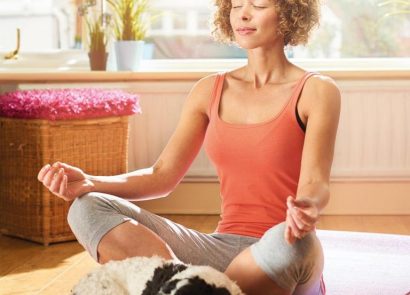When the sun is out, that’s usually when we think about getting some exercise in. The good weather makes a game of tennis or a jog round the block seem so much more appealing. But as Ten Health & Fitness (a boutique fitness provider) explain, this is when they see the highest amount of sports related injuries. This is caused by both the type of sports we get up to in the hotter months, and of course the fact that events like Wimbledon encourage hundreds to start working out. Cheyne Voss, director of physio at Ten Health & Fitness, shares what common injuries he sees in the summer, and how you can avoid them.
Sprained ankle
“During and immediately after Wimbledon, we see a lot of ‘Armchair Nadal’s’. After the winter’s inactivity, they dust off their racquets, head out onto their local court – only to hobble off a few minutes later with a rolled ankle. Angle sprains therefore are one of the most common sports-related injuries and most of the time, can be helped without the need for physiotherapy.”
Cheyne recommends you implement balance training in your workouts. When you’re warming up, try standing on one foot with your eyes closed. As you get better, buy a wobble board and do the same on this. This will strengthen your lower leg muscles, putting you less at risk of spraining your ankle as you dart around the court.
Achilles pain
“Perhaps the most common summer holiday injury, we find when people start running on really soft surfaces, such as on sand in bare feet, the increase in force through the tendon is a real problem.”
When we think of summer exercise, we picture running on a picturesque beach. But as Cheyne said, this will do more harm than good. He suggests beginner runners avoid running on sand, or even walking on it for extended periods of time. However, if you have your heart set on it, you can start doing calf rises (focusing on lowering slowly) and static holds with a slight bend in the knee. This will build up muscles and help you cope with soft surfaces.
Runner knee
“When the sun is shining, many people feel the urge to go jogging, but many people do not have good running form or adequate running shoes. The pain from runners’ knee is more often felt after running, especially when walking slowly, and especially downstairs. Then when returning to running after this, the pain will come and go many times over.”
This is good advice for any exercise – do not overwork yourself! Speaking from experience, when you set off on your first jog, you’ll probably just put any old trainers on and set off. But as Cheyne says, you can’t do this. Invest in the right footwear and gradually build up endurance. You can also start strengthening your gluteal muscles. You can do this by doing clams (with a band around your knees), side lying leg lifts, squats with a band, crab walks and then progressing to a modified side wall squat.
Hip Impingement
“Twisting sports with a stop-start acceleration component such as Tennis can cause hip impingement. This is when poor gluteal control of your pelvis causes your hips don’t remain level (one side drops, and also deviates inwards and crosses over), therefore impinging (crushing) the inside of your hip joint and creating pain (felt most commonly in your groin). If left untreated, this can lead to a cartilage tear of the hip.”
Another one for you Wimbledon Wannabes this summer. Before you set off on the courts, incorporate some squats into your work out, and as much Pilates as you can. This low-impact exercise can improve your form and control – essential for tennis players.
Sore back
“We all want to feel our best in the summer. Many people hit the gym hard by lifting weights they are not ready for. Not just this but lifting objects from a lowered height, anything from dumbbells at the gym to loading luggage onto a trolley at the airport, can aggravate the spine. Once injured, this impacts on almost every aspect of life and sport until resolved”
This is definitely one you’ll want to avoid. As Cheyne said, don’t be tempted to impress your friends at the gym by going for the heaviest weight, even for a second. Increase your core stability work and counteracting stretching. This can be done through yoga, particularly the cobra position.
Neck pain
“Usually neck pain is caused by too much sedentary postures, such as slouching and hunching over a desk. But in exercise, a common cause can be cycling for long periods of time.”
That’s right – who knew hours of cycling would actually harm you? If you’re a keen cyclist, or just spend a lot of your work day at a desk, try getting in some neck stretches. Look straight ahead and tick your chin in while looking straight ahead. This completely straightens the neck, and can be done when you’re still on the bike. After exercise, foam rolling can be great to help open out the back.





















